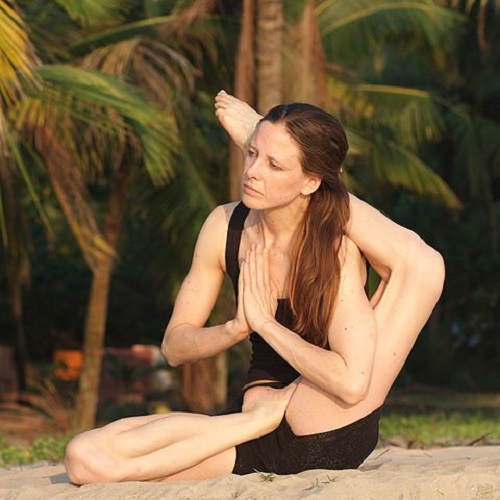Difference Between Ashtanga and Vinyasa
Introduction
Both terms (Ashtanga and Vinyasa) are used with reference to the practice of yoga. The yoga practices advocated by these two terms include the same steps and stages. The difference exists in the way the stages are followed. The Ashtanga Yoga follows a serial order in which each stage, like the rungs of a ladder, helps the practitioner to rise to the next stage. In Vinyasa Yoga in contrast, all the eight steps are combined into a holistic, integrated, and inclusive approach throughout the practice from beginning to end.
Ashtanga
The Sanskrit word “Ashtanga” is composed of the words “Ashta,” meaning eight, and “Anga,” meaning limbs or parts. It is used with the word “yoga,” as in Ashtanga Yoga, to refer to the eight steps in the practice of yoga as explained by the Sage Patanjali in his text Yoga Sutra.
The eight steps are [1] Yama, [2] Niyama, [3] Asana, [4] Pranayama, [5] Pratyahara, [6] Dharana, [7] Dhyana, and [8] Samadhi.
These eight steps are further subdivided into two groups. Steps 1 to 5 are known as “The Sadhana Pada,” while steps 6 to 8 are known as “The Vibhuti Pada.”
Ashtanga Yoga is the traditional form of yoga practice in which each step is practiced in the precise serial order outlined above and prepares the practitioner for the next step in the serial order.
The first two steps—Yama and Niyama—help the practitioner cultivate a calm mind, a positive mental attitude, and a disciplined lifestyle based on punctuality and austerity. These will prepare her or him for the third step—Asana. The Asana opens the subtle energy channels of the body and stimulates the various glands to secrete. Part of each Asana practice is to focus one’s attention successively on various parts of the body to ensure that the specific conditions for the particular Asana are being followed, for example—feet parallel, stomach pulled in, shoulders held back, etc. In doing so, the practitioner is actually training the mind to remain still for a few seconds.
The succeeding fourth and fifth stages are meant for the withdrawal of the senses or sensory inputs from outside sense objects. In Pranayama, the attention is diverted away from external objects and focused on the in-and-out movements of the Breath. This act severs connection with the outer world, internalizes attention, and regularizes the rhythm of breathing. This prepares the individual for Pratyahara in which sensation from the senses of taste, touch, sight, hearing, and smell do not reach their respective centers in the brain. With the completion of this step, we have completed the “Sadhana Pada.” The benefits gained from the practice of the Sadhana stage are realized and utilized in the following stage. Hence, this stage is called the “Vibhuti [fruits] Stage.” It consists of three steps, namely Dharana, or focus; Dhyana, or Concentration; and Samadhi, or integration and absorption into the Universe.
Vinyasa
Vinyasa is a Sanskrit word meaning “flow and connection.” In yoga, it refers to a set of breath-synchronized movements, linking and synchronizing the inhaling and exhaling of the breath with each movement in each specific pose and from one pose to the other pose. Each movement of each specific Asana/Pose is coordinated with the inhale and exhale of the breath.
Simultaneously, the breathing itself is a combination of Mudras, Pranayama, Pratyahara, Dhyana, and chanting of Mantras.
The result is a yoga practice that is more flowing and continuous like the breath itself, without any breaks in between. It is a flowing sequence of specific asana and breath movements and a smooth transition from “Pose to Pose.” You then have a sequential movement interlinking postures and other stages of yoga to form a continuously flowing rhythm.
Conclusion
The traditional Ashtanga Yoga is good for a learner since it enables her or him to understand and master each stage before proceeding to the next one. Vinyasa Yoga appears more suited to advanced learners or for one who has already understood all the eight limbs.
- Difference Between Indian Farmer and U.S. Farmer - January 11, 2016
- Difference Between Ashtanga and Vinyasa - January 11, 2016
- Difference Between Indian Muslim and Arab Muslim - December 3, 2015
Search DifferenceBetween.net :
Leave a Response
References :
[0]https://de.wikipedia.org/wiki/Ashtanga_%28Vinyasa%29_Yoga

